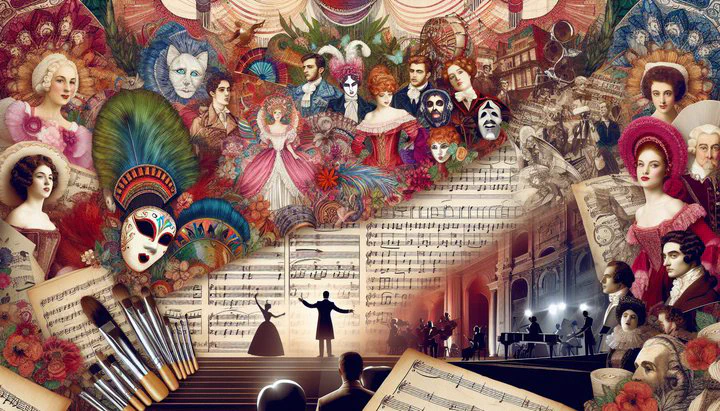Les Contes d'Hoffmann Multiple Versions

Introduction to Les Contes d’Hoffmann
Have you ever wondered why some operas have different versions? Welcome to the fascinating world of Les Contes d’Hoffmann! This opera, composed by Jacques Offenbach, is beloved and full of magic and emotion. Offenbach, famous for his lively music, created this opera to tell the story of the poet Hoffmann and his three tragic love stories. These stories are filled with fantasy and real-life struggles, making them relatable to everyone. Les Contes d’Hoffmann is not just any opera; it’s special because Offenbach sadly passed away before finishing it, leaving us with many versions to explore. This mystery and the beautiful music make it a favorite for musicians and opera lovers everywhere.
Discovering the Many Faces of Hoffmann’s Score
Why does Les Contes d’Hoffmann have multiple versions? The answer lies in Offenbach’s untimely death. He left the opera unfinished, and many musicians stepped in to complete it. This led to several multiple versions of the score. Some have added scenes, while others omit parts. The music arrangement, called orchestration, can change too, adding different feelings to the performance.
For musicians and educators, exploring these versions offers a chance to try new things and see how different choices can change the story. Understanding these multiple versions of the score helps us appreciate the opera’s depth and encourages us to dive deeper into its music.
Placement of the Barcarolle and Its Impact
The placement of the Barcarolle in Les Contes d’Hoffmann is truly mesmerizing. Known for its calming melody, the Barcarolle is a duet that feels like a gentle boat ride. It’s usually placed at the start of the third act, set in Venice, bringing a touch of romance before the drama rises.
Different versions might shift the Barcarolle’s placement, changing its impact. This gives performers fresh ways to tell the story. By studying the placement of the Barcarolle in Les Contes d’Hoffmann, musicians learn how music can shape a story’s mood and magic.
Hoffmann at the Met and Notable Recordings
The Metropolitan Opera, or “the Met,” is a world-famous stage for opera. Hoffmann at the Met has seen many amazing performances over the years. One special moment was the 1972 recording with Joan Sutherland and Placido Domingo. Their performance brought new energy and emotion to the opera, making it a classic.
Listening to recordings from the Met shows how Les Contes d’Hoffmann multiple versions continue to inspire. Each performance brings something new, offering musicians and educators insights into how different choices can enhance storytelling.
Conclusion and Musical Insights
Exploring the Les Contes d’Hoffmann multiple versions reveals a world of history, complexity, and artistic possibilities. Offenbach’s unfinished masterpiece invites us to understand the multiple versions of the score and appreciate its depth. The exploration of the placement of the Barcarolle in Les Contes d’Hoffmann shows how music can transform a story, while Hoffmann at the Met highlights the opera’s enduring appeal.
Why not listen to a few different recordings and see which version you prefer? By engaging with this masterpiece, musicians and educators can enhance their skills, broaden their perspectives, and deepen their love for music. Join a community discussion and share your favorite version of Les Contes d’Hoffmann. Let’s celebrate opera as a vibrant and evolving art form that continues to inspire us all.